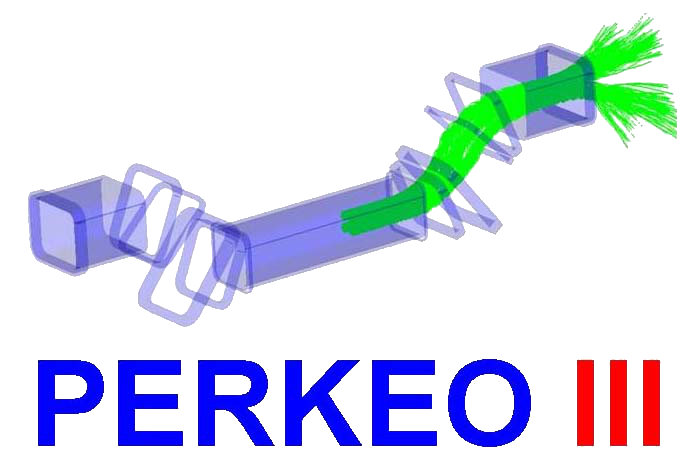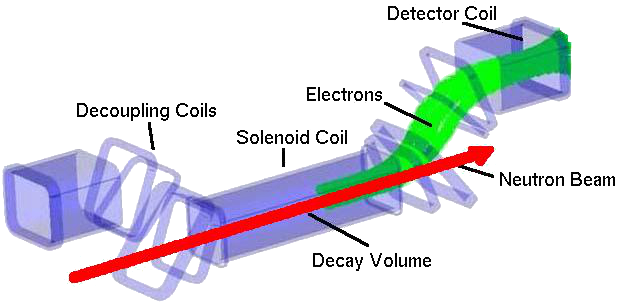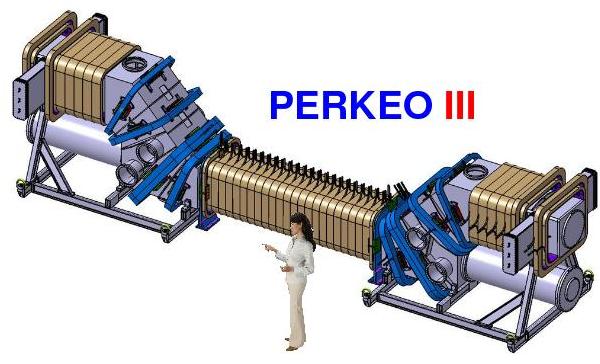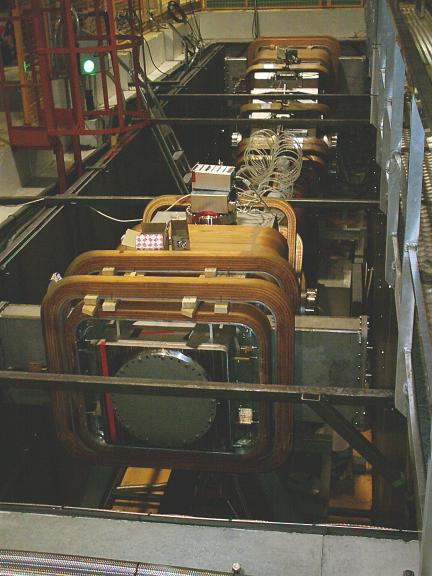The Next Generation Neutron Decay Experiment
 | ||||||||||||||||||
Experimental MotivationPerkeo III is the new experiment of the Perkeo group to perform precision experiments of the weak interaction. It is designed to avoid the problems of its predecessing spectrometers Perkeo I and Perkeo II. With Perkeo III, it will be possible to study the decay of the free neutron without background: Its decay volume will be considerably larger, making measurements with a pulsed neutron beam possible without losing too much statistics. The pulsed beam allows to enable the detector in time intervals when a bunch of neutrons is within the decay volume. When the prompt background radiation from the collimation system or the polarizer is present, data acquisition is disabled.
Design of Perkeo IIIThe instrument layout is shown in the figure (with simulated electron tracks). It consists of a big solenoid coil housing the decay volume. The coil produces a magnetic field of 150 mT which guides the charged decay products parallel or anti-parallel with the neutron beam depending on their initial momentum. Hence we have again a separation into two hemispheres and a 4 Pi detector. Several decoupling coils separate the electron/proton beam from the neutron beam an guides it onto the detectors.
Experimental PossibilitiesThe design of Perkeo III allows a large number of possible experiments, depending on neutron beam characteristics (polarized, pulsed, etc.) and the detector type. The following table gives an overview of some possibilities:
ExperimentsThe Perkeo III instrument was commissioned successfully in a first run at the Institute Laue-Langevin in 2007. This experiment used a continous neutron beam and obtained an unprecented detected neutron decay rate of 50 kHz within the spectrometer, two orders of magnitude more than in previous experiments! The results of this measurement have been published in Nucl. Instr. Meth. A 611 (2009) 216-218 and some impressions from this first beam time and the installation at the cold neutron beam line PF1b are online. In 2008/2009 we performed a measurement of the beta asymmetry correlation coefficient A at the Institut Laue-Langevin. In contrast to the first run, a pulsed neutron beam was used. Data is only taken while the neutron pulse is fully contained within the central volume of the spectrometer and thus leading sources of systematic uncertainty are eliminated.
Although the average intensity of the neutron pulse is much lower in a pulsed beam than it is in a continous beam, we still increased the overall number of detected events by a factor of more than four compared to the last measurement with Perkeo II. Data analysis of this measurement is progressing and results will be published soon. |





